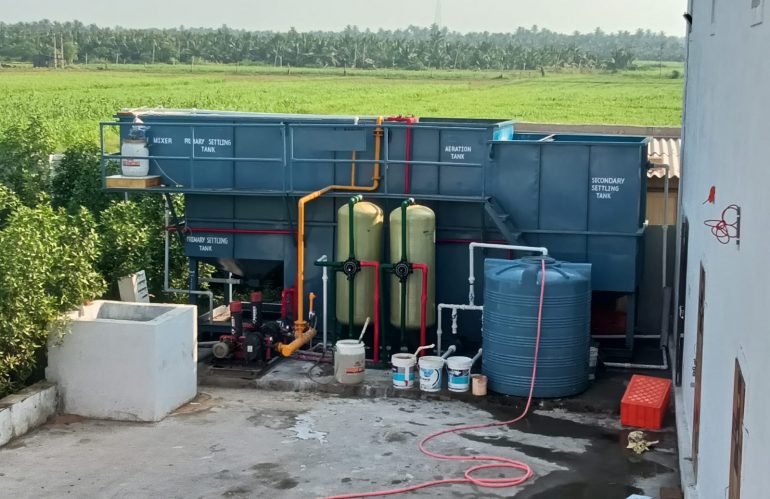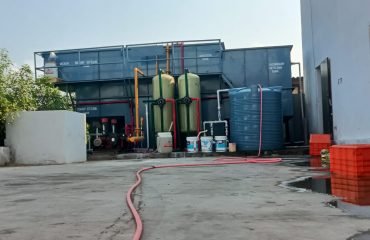Leh, a captivating town nestled in the lap of the Himalayas, is known for its breathtaking landscapes, ancient monasteries, and unique cultural heritage. As this Himalayan gem witnesses increased urbanization and tourism, the management of wastewater becomes essential to protect its pristine environment. Sewage Treatment Plants (STPs) play a pivotal role in treating wastewater, ensuring public health, and harmonizing urban development with the fragile Himalayan ecosystem. This article explores the significance of STPs in Leh and their vital role in nurturing sustainability amidst the Himalayan splendor.
Understanding Sewage Treatment Plants
Sewage Treatment Plants, often referred to as STPs, are specialized facilities designed to treat domestic and industrial wastewater. They employ various physical, chemical, and biological processes to remove contaminants and impurities from sewage, making it safe for discharge into the environment or potential reuse. STPs are indispensable for safeguarding public health, preserving natural water bodies, and supporting urban growth while maintaining environmental balance.
The Significance of STPs in Leh
Leh, situated at a high altitude in a fragile Himalayan ecosystem, faces unique challenges related to sewage management. Here’s why STPs are of paramount importance in Leh:
- Environmental Sensitivity: Leh is located in a region of great ecological importance. The Himalayan environment is fragile, and STPs are essential to ensure that sewage is treated effectively, preventing contamination of pristine water bodies and safeguarding the region’s biodiversity.
- Tourism Hub: Leh attracts travelers from around the world who seek solace in its stunning landscapes and spiritual retreats. Proper sewage treatment is crucial to maintaining the cleanliness and charm of this tourist destination.
- Cultural Heritage: The town boasts a rich cultural heritage, with ancient monasteries and a unique way of life. STPs play a vital role in protecting these culturally significant areas from environmental degradation.
- Public Health: With a growing urban population and tourism, maintaining a clean and hygienic environment is essential for public health. STPs remove harmful pathogens and contaminants, reducing the risk of waterborne diseases and promoting the well-being of Leh’s residents and visitors.
How STPs Operate
Sewage Treatment Plants employ a multi-stage process to treat wastewater efficiently. Here’s a simplified overview of the typical STP operation:
1. Primary Treatment
In the primary treatment stage, large solids are removed from the sewage through processes like screening and sedimentation. This initial step reduces the load on subsequent treatment stages.
2. Secondary Treatment
Secondary treatment involves biological processes where microorganisms break down organic matter present in the sewage. This step significantly reduces the biological oxygen demand (BOD) and chemical oxygen demand (COD) of the wastewater.
3. Tertiary Treatment
Tertiary treatment is an advanced stage that further refines the effluent to meet stringent quality standards. It may include processes like filtration, chemical treatment, and disinfection to remove any remaining impurities.
4. Discharge or Reuse
The treated sewage is either discharged into water bodies, adhering to regulatory guidelines, or made available for non-potable purposes, such as irrigation, landscaping, or industrial processes.
Benefits of Sewage Treatment Plants
STPs offer numerous benefits for Leh and its residents:
- Environmental Preservation: STPs safeguard the region’s natural environment, ensuring that water bodies, lakes, and the Himalayan ecosystem remain unpolluted, contributing to a cleaner and more sustainable town.
- Tourism Enhancement: A clean and hygienic environment enhances the appeal of Leh as a tourist destination, contributing to the local economy and creating opportunities for livelihoods.
- Cultural Heritage Protection: By preventing environmental contamination, STPs help preserve Leh’s rich cultural and natural heritage, ensuring that ancient monasteries and traditions continue to thrive.
- Public Health: Effective sewage treatment reduces the risk of waterborne diseases, promoting the well-being of Leh’s residents and enhancing the experience of visitors.
- Resource Efficiency: Treated wastewater serves as a valuable resource, diminishing the demand for freshwater and enhancing resource efficiency.
In Conclusion
Sewage Treatment Plants are instrumental in Leh’s journey toward sustainable urbanization amidst the pristine Himalayan landscape. They play a vital role in ensuring that the town can continue to enchant visitors with its natural beauty, spiritual richness, and serene landscapes while accommodating urban growth responsibly. By prioritizing efficient sewage treatment, Leh can remain a shining jewel in the Himalayas, where urban progress and environmental preservation coexist in perfect harmony.





